- Submissions

Full Text
Biodiversity Online J
Management and Uses of Woody Crops Field Gene Banks, a Multi-Functional Approach in the Experience of Apulia Region (Italy)
La Notte P1*, Venerito P2 and Savino VN3
1Institute for Sustainable Plant Protection, National Research Council (CNR), Italy
2Centre for Research, Experimentation and Training in Agriculture Basile Caramia, Italy
3Foundation ITS Academy Agri Puglia, Italy
*Corresponding author:Pierfederico La Notte, CNR Institute for Sustainable Plant Protection, Via Amendola 122/D, 70126 Bari, Italy
Submission: June 27, 2024; Published: July 12, 2024

ISSN 2637-7082Volume4 Issue5
Abstract
The conservation of woody fruit species, carried out mainly ex situ in the collection fields of large conservation centers with numerous species and hundreds of varieties, requiring highly qualified personnel, suitable equipment and facilities, is technically very complex and, above all, very expensive. The proposed study case in Apulia demonstrates that, although underestimated, the problem of the economic sustainability of on field conservation sites, like other phytosanitary and climatic factors being a concrete threat to the safety of genetic resources, can be overcome with a multifunctional approach, combining conservation with research activities, development of new products, varietal innovation, training and other related activities. In recent years, since agrobiodiversity and genetics were recognized as fundamental solutions to face the new challenges of climate change adaptation and sustainability of cultivation for safeguarding agriculture and global food security, also the importance and role of germplasm conservation centers changed considerably, having gained visibility, media attention, public consideration and related funding. By increasing the educational and information functions in the conservation centers, the synergy with tourist activities also becomes a concrete perspective to inform citizen and consumers, for attracting new interested visitors, bringing revenues for conservation and research, for promoting the territory and valorizing the local genetic resources.
Keywords:ex situ field conservation; Agrobiodiversity; Woody crops; Technical management; Economic sustainability; Breeding; Tourism; Multi-funtionality; Communication; Information
Abbreviations:CRSFA: Centre for Research, Experimentation and Training in Agriculture
Introduction
Conservation of woody species propagated by seed, such as many forest plants, is carried out mainly in situ in reserves, natural parks or botanical gardens, the conservation of woody fruit crops, characterized by a large number of cultivated varieties and therefore necessarily propagated only agamically (by self-rooting or grafting), is mainly carried out ex situ in collection fields [1,2]. Compared to the species of natural flora threatened by human and climatic-environmental factors, the sensitivity and commitment to the conservation of agrobiodiversity, including the neglected varieties of minor commercial interest, is certainly much more recent. For this reason, most of the current ex situ field gene banks, excluding the catalog fields created specifically in association with the national variety registers, were born not for conservation but for different experimental purposes such as breeding activities, evaluation fields for cultivars and clones, etc. and only subsequently were transformed into true field gene banks, hosting many other genetic resources.
Case Presentation
The experience of Apulia region. Apulia, a southern Italian region bathed by the two Adriatic and Ionian seas and stretching eastwards into the Mediterranean, for geographical, climatic and historical reasons has an important agricultural sector and is very rich in local genetic resources, with a vast heritage of unique varieties of grapevine, olive, fruit crops and vegetables. The conservation of the woody fruit crops is conducted in a wide system of on-farm and ex situ collections leaded by the regional center for the ex situ conservation of autochthonous fruits, grapevine, olive and citrus germplasm, managed by CRSFA Basile Caramia in Valle d’Itria, a wonderful touristic territory famous for its typical stone house called trulli. Today, the Center, covering an area of approximately 21 hectares and divided, according to the different climatic needs of the species, into two sections “Marangi-Caramia” (Figure 1) on the hills of Locorotondo (450m asl) and “Vivai Conca d’Oro“close to the Jonian sea in Palagiano (TA), represents one of the largest in vivo germplasm’s collection in the Central-Southern Italy and the result of the applied research conducted by various Institutions. The initial nucleus of the collections was established through a grapevine clonal/sanitary selection program started by the University of Bari in Apulia when the first European law on the grapevine propagation materials certification was enforced in 1968. With the expansion of the working group to the National Research Council and then the CRSFA Basile Caramia, several other activities followed: the extension of grapevine clonal selection to other Italian regions (Marche, Abruzzo, Campania, Basilicata and Calabria) and some Mediterranean countries (Albania, Croatia, Serbia, Lebanon, Malta, etc.) and the recovery of local endangered germplasm of the main Mediterranean fruit species. The unique characteristic of the large grapevine collection, being derived from the clonal selection and hosting all the accessions selected for a large number of cultivars, is the conservation of intra-varietal genetic variability, now almost disappeared from the commercial vineyards established in the last 20-30 years with clonal materials. The Center currently preserves genotypes belonging to over 1.800 varieties of 40 species (Table 1) and it’s managed according to the “Guidelines for the conservation and characterization of plant biodiversity of agricultural interest” of the National Plan on Biodiversity approved by the Italian Ministry of Agriculture in 2009.
Figure 1:Maps and pictures of Regional Center for the ex situ conservation of autochthonous fruits, grapevine, olive and citrus germplasm, section “Marangi-Caramia” in Locorotondo.
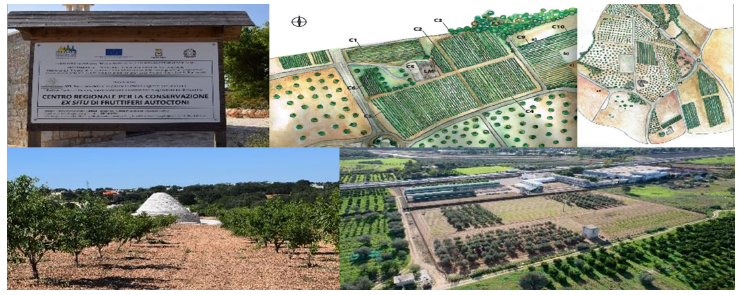
Table 1:List of woody fruit species hosted in the collection with indication of the cultivar’s number, location and surface.

Since 2012, the regional government of Apulia decided to invest on recovery, conservation and characterization of germplasm funding for 5 years, through the Rural Development Plan, several important integrated projects for the agrobiodiversity, three of which dedicated to the woody crops: grapevine, olive and fruits species. The projects allowed the discovery and the introduction of hundreds of minor varieties in the gene bank, sensible improvements in the study of regional genetic resources, important investments in new collection fields, equipment, laboratories and the recovery of the ancient stone buildings such as trulli, lamie and a snow house, within the collection, in the charming frame of Valle d’Itria. The restored buildings, transformed into a “diffused Museum of Biodiversity”(Figure 2), become a tourist attraction aimed to welcome visitors among ancient varieties, registration/ pre-multiplication fields, breeding and experimental fields, like in an open-air classroom and a living museum; fruit/wine tasting and the storytelling about memories and traditions of regional germplasm and local communities, complete a full and unique touristic experience (Figure 3). Beside the activities of official varietal/clonal registration, the collection fields host technical courses (for example for ampelography, grafting, pruning), private/ public breeding activities (Figure 4) and provide fruits for many purposes: pomological exhibitions (Figure 5), studies, technological evaluations, sensorial tasting and processing of new experimental products. The communication about project’s activities and germplasm is made manly on the website (www.fruttiantichipuglia. it) and on social media (Facebook and Instagram). From 2022, the financing of new regional projects for a further three years, beside the recovery and the study of other cultivars, aimed at the economic valorization of regional germplasm. For this purpose, numerous new activities such as a running sport competition and an Agrobiodiversity Festival (Figure 6a) started, addressed to public, tourists and local consumers (Figure 6b).
Figure 2:Maps and pictures of diffused Museum of Biodiversity in Locorotondo.

Figure 3:School and touristic visits at the Regional Center for the ex situ conservation in Locorotondo.
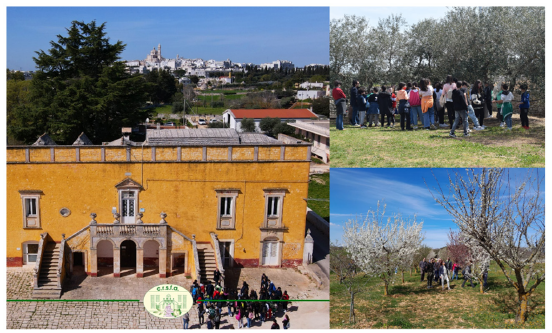
Figure 4:Breeding activities in a wine grape collection vineyard.
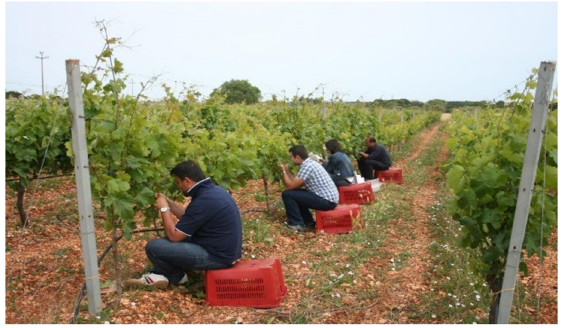
Figure 5:Pictures of pomological exhibitions.
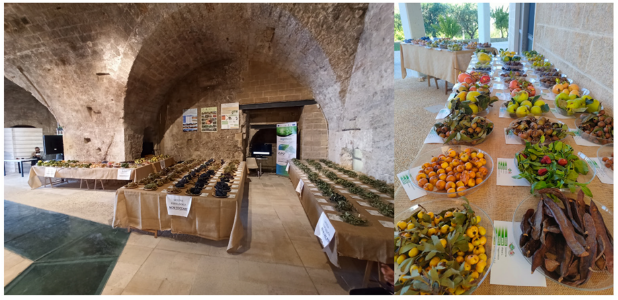
Figure 6:a) Running sport competition. b) Biodiversity Festival 2024.
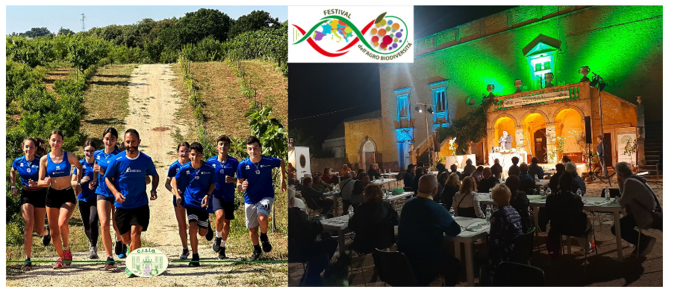
Discussion
Issues in field gene banks management
Generally, speaking the conservation of species of agricultural interest, and in particular the perennial woody crops, due to the high number of varieties, clones, biotypes, is more complex and expensive for the different characteristics of germplasm in term of growing cycle, phenological stages, pedoclimatic and agronomic (water, nutrients, etc.) requirements, susceptibility/resistance/ tolerance to pathogen, pest and abiotic stresses [3]. On the field ex situ collections, the need and safety of the long-term conservation for the future generations poses some crucial issues such as the germplasm and land property, the organization and use of the collections, the complex technical management to prevent or control sanitary problems [4] and other potential threats for the loss of genetic resources. Even if rigorous guidelines and protocols for the management of ex situ collections have been defined at international [3] and national level, the technical solutions and consequently the management costs are extremely variable depending on the type and number of species, varieties and accessions conserved at every specific conservation site. The problem of the economic sustainability of the conservation sites, although addressed in few studies [5,6] and generally underestimated, together with some phytosanitary and climatic extraordinary events, should be considered main threats for the safety of genetic resources. In this context a major limitation of the collections of woody fruit species, conserved as few trees for each variety, is that the production obtained, with a few exceptions for processed products such as wine and olive oil, does not produce revenues as it is incompatible in terms of harvesting costs, volumes and qualitative standards with the sales on local markets.
New challenges and new uses of the field gene banks
If the extensive clonal and sanitary selection programs, starting from the 1970s, made possible the availability of certified planting material for the nursery sector and valorisation of the main local cultivars at the basis of regional denominations, only in the last 15-20 years the higher attention to the agrobiodiversity protection met the interest of consumers and markets for new products such as foods, wines, oils by minor and neglected varieties. The field gene banks therefore became the starting point of a direct valorization process of some cultivars as new typical local products. More recently the evidence of damages caused by global warming and extreme climate events on natural environments, our living space and agricultural activities, have increased public awareness about the importance of protecting biodiversity, both natural and cultivated, as an important factor of resilience and adaptation to climate change. The international treaties, then the regulations, plans and national funding for the recovery and protection of genetic resources brought the issue of biodiversity to the attention of communities, in school curricula/programs, in newspapers and on television.
The germplasm collections have finally been recognized for their important role in protecting a precious common heritage, being able to start, if properly organized, a new public function in informing, communicating and training the public on the topic. Beside the efforts of adaptation to climate change, within the European Green Deal program, the ambitious objective of reducing significantly the use of chemicals for crop protection was adopted to make agriculture more sustainable in few years. The collection fields become once again central for the varietal innovation, first to identify, through the screening of conserved germplasm, traits of resistance/tolerance to biotic and abiotic stresses, then as a place for crossing local varieties in new genetic improvement programs. Furthermore, looking ahead, the new socially positive image and the unexpected visibility of agrobiodiversity conservation centers could be used to increase the demand and on-site sales of unique minor food products among enthusiasts and tourists, helping to cover management costs of conservation as well as inducing small farm to bring a limited number of plants back into cultivation. Since the use of Agrobiodiversity and the related gene pools for varietal innovation are one of the main elements to face the future challenges for a sustainable agriculture, the European green deal and the adaptation to climate change, the ex situ field collections will take on an increasingly important role as open-air laboratories. At the same time, the conservation centers are increasingly becoming virtual classrooms, with a direct experiential approach, the best places for informing and training new generations on biodiversity, on its importance for the resilience of ecosystems, as well as on agrobiodiversity, as cultural element, economic resource for the territory and source of new food products. Considering the important role that the germplasm collections can play as tourist attractors and that tourism itself can represents for the economic sustainability of the collections, the proximity to other important tourist places well served by public transports should become one of the priority criteria in the localization of any conservation center.
Conclusion
As shown by the experience of Apulia region, the multifunctionality of ex situ collections, being able to carry out simultaneous activities of germplasm protection and valorization, research and innovation, promotion of the territory, information and training, must become a strategic objective in the design and implementation of all new investments for genetic resources conservation.
Acknowledgement
We thank the custodian farmers who kept the precious germplasm in cultivation and entrusted us for ex situ conservation. We would like to thank all the scientific bodies and Italian and foreign researchers who have worked for the identification, recovery of germplasm on the territory and it’s study in the field gene bank. We thank the public administrations, in particular the municipality of Locorotondo for having granted the land to host the fields and structures of the germplasm conservation center and the Puglia region for believing and funding projects for the protection and valorization of local agrobiodiversity (PSR Puglia FEARS 2007/2013 Reg. CE 1968/2005 Measure 214.4a; PSR Puglia 2014/2020 Operation 10.2.1).
Conflict of interest
The authors declare that they have no conflict of interest related to the topic and content of this publication.
References
- Reed BM, Engelmann F, Dulloo ME, Engels JMM (2004) Technical guidelines for the management of field and in vitro germplasm collections. Handbooks for Genebanks, p. 106.
- Priyanka V, Kumar R, Dhaliwal I, Kaushik P (2021) Germplasm conservation: Instrumental in agricultural biodiversity-A review. Sustainability 13: 6743.
- FAO (2014) Genebank standards for plant genetic resources for food and agriculture. pp. 65-113.
- La Notte P, Venerito P, Savino V, Martelli G (2012) Management and prevention of virus infection in grapevine gene-banks. Extended abstract of meeting phytoplasmas and virus management in grapevine collections for germplasm conservation, mobilization and evaluation. Bulgaria.
- Epperson JE, Pachico DH, Guevara CL (1997) A cost analysis of maintaining cassava plant genetic resources. Crop Sci 37: 1641-1649.
- Saxena S, Chandak V, Ghosh SB, Sinha R, Jain N, et al. (2003) Costs of conservation of agrobiodiversity in India. pp. 137-174.
© 2024 La Notte P. This is an open access article distributed under the terms of the Creative Commons Attribution License , which permits unrestricted use, distribution, and build upon your work non-commercially.
 a Creative Commons Attribution 4.0 International License. Based on a work at www.crimsonpublishers.com.
Best viewed in
a Creative Commons Attribution 4.0 International License. Based on a work at www.crimsonpublishers.com.
Best viewed in 







.jpg)






























 Editorial Board Registrations
Editorial Board Registrations Submit your Article
Submit your Article Refer a Friend
Refer a Friend Advertise With Us
Advertise With Us
.jpg)






.jpg)














.bmp)
.jpg)
.png)
.jpg)










.jpg)






.png)

.png)



.png)






